Ubersitz, the utterly unique – and deafening – Swiss custom
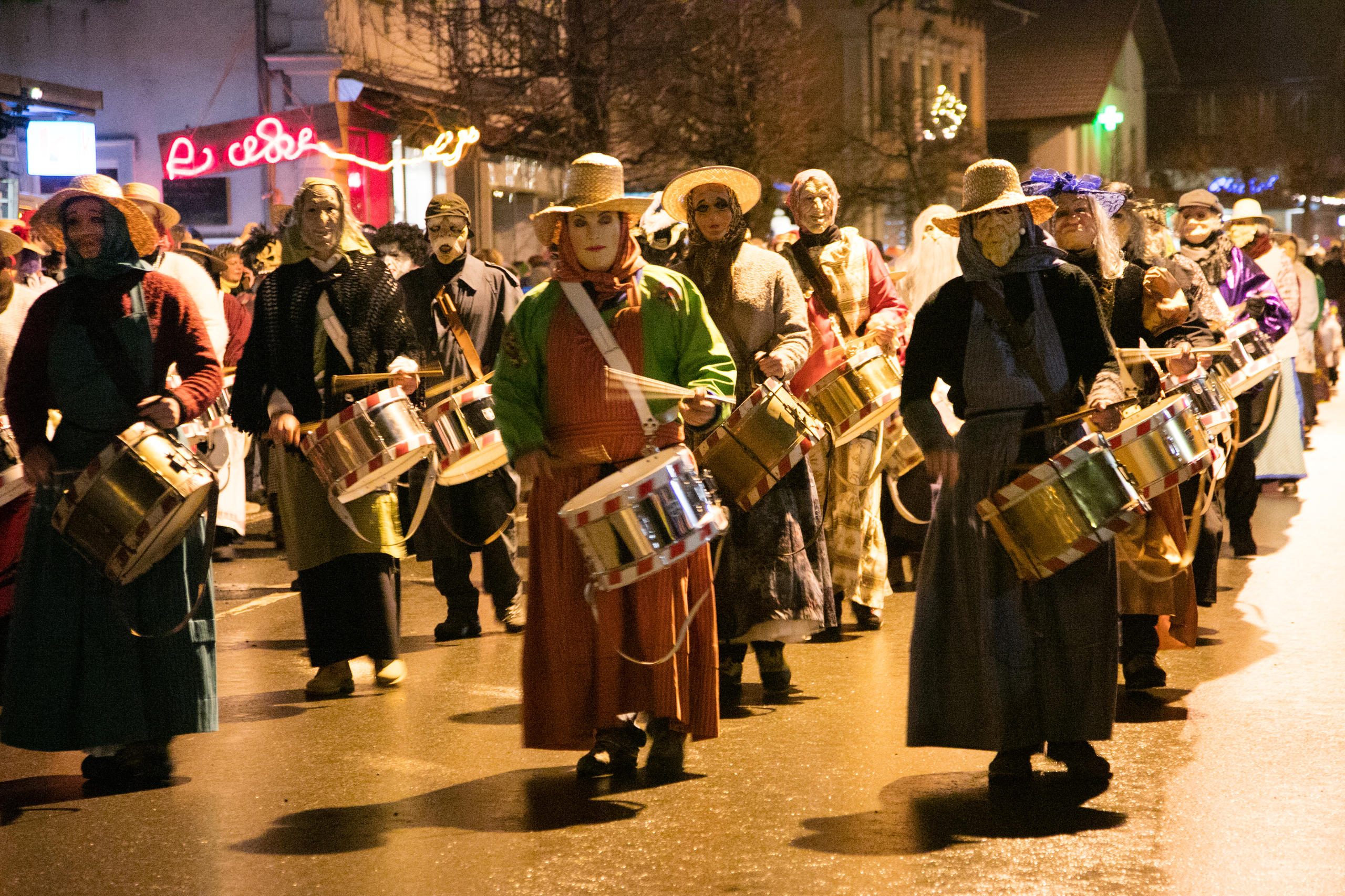
At the end of every year the villages around Meiringen in the Bernese Oberland are a hive of activity. The inhabitants of the Haslital, the Hasli valley, celebrate the ancient custom of Ubersitz in “Old Year’s week”.
“Begone, evil spirits, disappear back into the realm of the dead!” Such banishments are widespread in Switzerland and are traditionally celebrated around the winter solstice.
In the Haslital, people drive out the evil spirits with drums and “Treicheln” or trychels (giant cowbells). The custom called Ubersitz – never pronounce it with an Ü! – is considered the most important folk festival in the region. This is when the locals brave the cold and fatigue for several days and nights.
Although similar customs such as the Klausjagen or Silvesterchlausen exist in other parts of Switzerland, the combination of trychels, drums, masks and the communities of several villages with distinctive characteristics is unique.
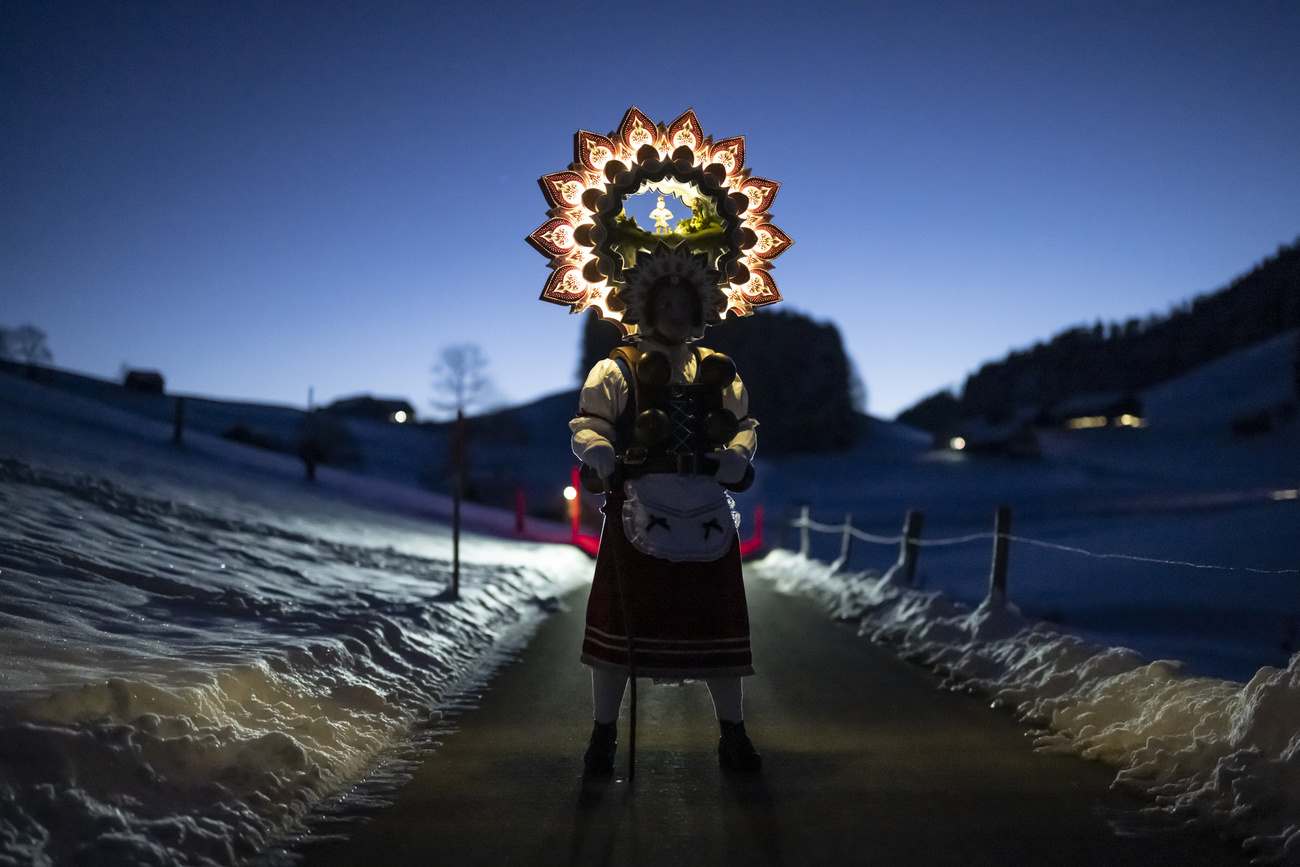
More
Happy – and creepy – New Year in Switzerland!
The Ubersitz is still very much alive and is passed down from generation to generation. What’s more, it’s an attraction not only for the tourists who make the pilgrimage to the Haslital mainly for the winter sports.
The processions begin in Old Year’s week on the night of December 25/26 and end – with the actual Ubersitz – on the second-last working day of the year: on December 30 this year. Every year several thousand people line the streets of the centre of Meiringen for this big parade.
According to several sources, such spirit banishments can be traced back to pre-Christian times and are based on Celtic traditions around the winter solstice (usually December 21). But what exactly do these processions through the villages of the Haslital look like?
Strict rules
The custom is practised in very different ways. It takes place in seven villages or districts: Meiringen, Willigen, Hausen, Isenbolgen, Innertkirchen, Gadmen and Guttannen. They all have their own individual parade formations and instruments.
Before they all meet for the Ubersitz in the main town of Meiringen, they parade loudly through their own village for several days and nights. The focus is on the night. They sleep in the afternoon.
Some Trychel processions involve more than 100 people. Young and old can join in. However, as with the Graubünden custom of Chalandamarz, they must adhere to strict rules. Who walks in which position in the procession, who is allowed to wear which bell, and so on.

More
Gender bells, gender bells, ringing in the Alps
Not all participants wear masks or disguises. Some, for example, wear the “Mutz”, the traditional jacket, or civilian clothes. In four villages, including Meiringen, they dress up as “Boozeni” – elegant elderly women. In others, some dress as witches.
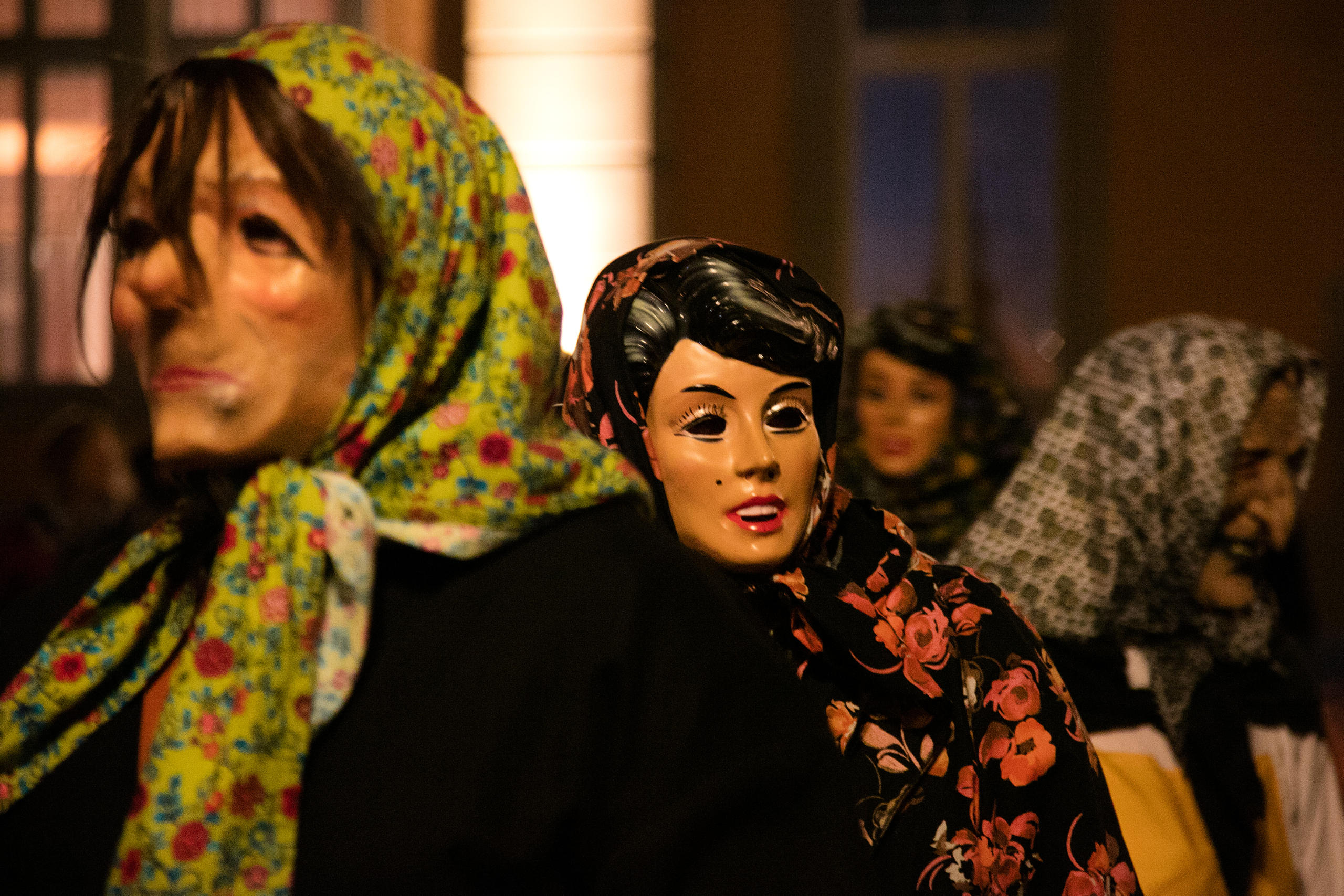
Each village has its own procession. The instruments follow a precisely prescribed rhythm. “However, this rhythm cannot be compared to a military march,” says the Haslital Tourism websiteExternal link, where the custom is described in detail.
The rhythm forces the participants into a “slow gliding step while the upper body rhythmically swings the bell or trychel”, it continues.
According to locals, the Ubersitz also stands out from other traditional processions in Switzerland owing to its focus on musical harmony between drums, trychels and bells. It’s said that these are precisely coordinated in the individual processions.
What does it sound like at the Ubersitz in Meiringen? Here is a video from 2022:
Special figures
The Ubersitz has a few strange characters that are not known from other Swiss customs. In some villages, for example, the “Huttenwybli” leads the Trychel procession, carrying her husband in a “Hutte” (back basket).
In the Meiringen district of Isenbolgen, the “Wurzelmandli” and the “Wurzelfroueli” lead the procession. From year to year, however, other new figures can also be seen in the deafening procession.
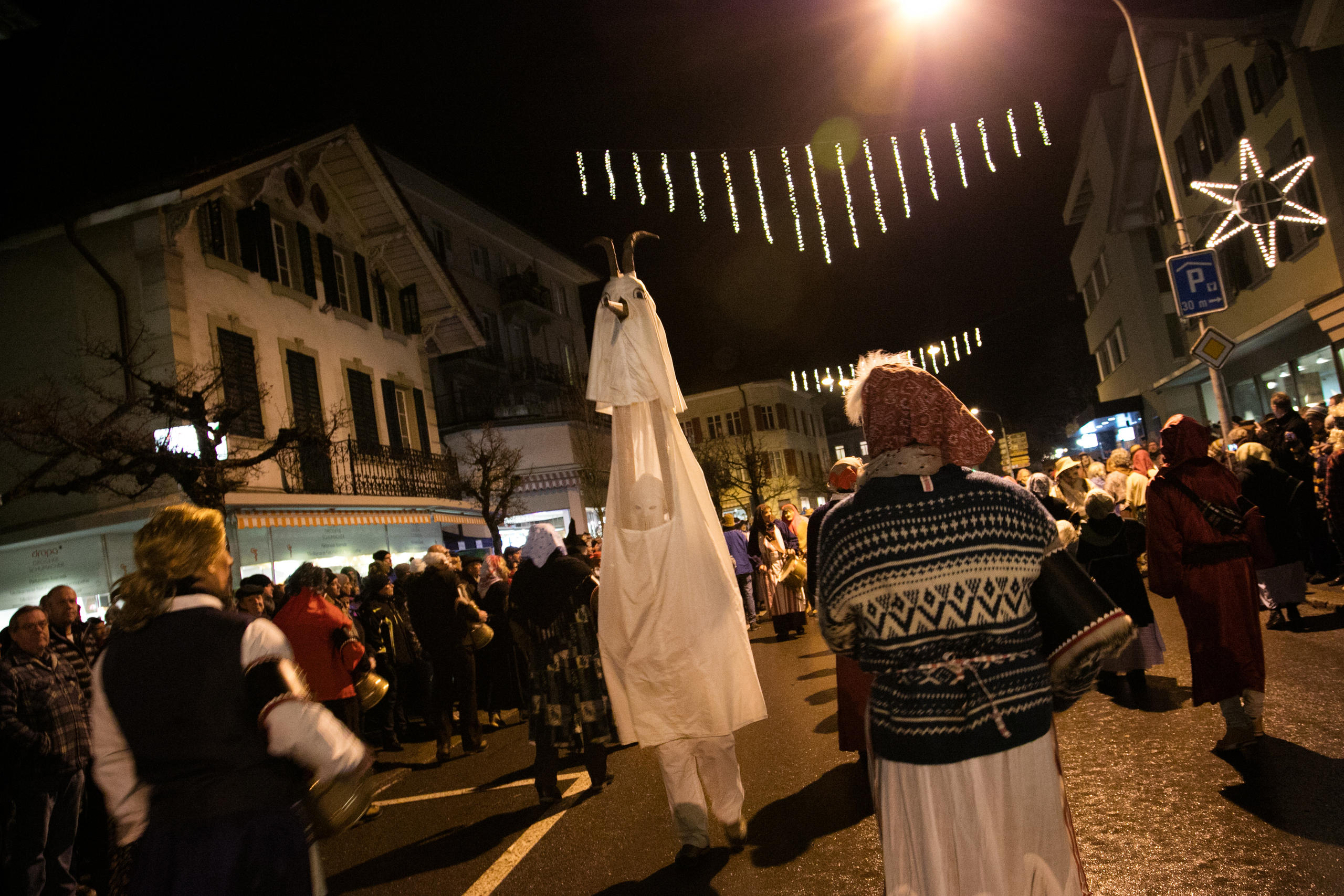
Overly cheeky onlookers at the Ubersitz must be wary of one figure above all: the particularly bizarre – and uniquely Swiss – Schnabelgeiss (beaked goat). Anyone who ventures too close to the musicians will be nipped by the beak of a white or black giraffe-like goat-horned Schnabelgeiss – “or it steals their headgear”, as Haslital Tourism explains.
Lawsuits threatened
Another unique aspect of the custom is that it is accompanied by a temporary newspaper with a large circulation: the Ubersitzler.
“This newspaper describes people’s funny misadventures. The texts are written in ‘Haslidiitsch’ [the local dialect] and are anonymous,” the Frutigländer newspaper explained in 2020External link.
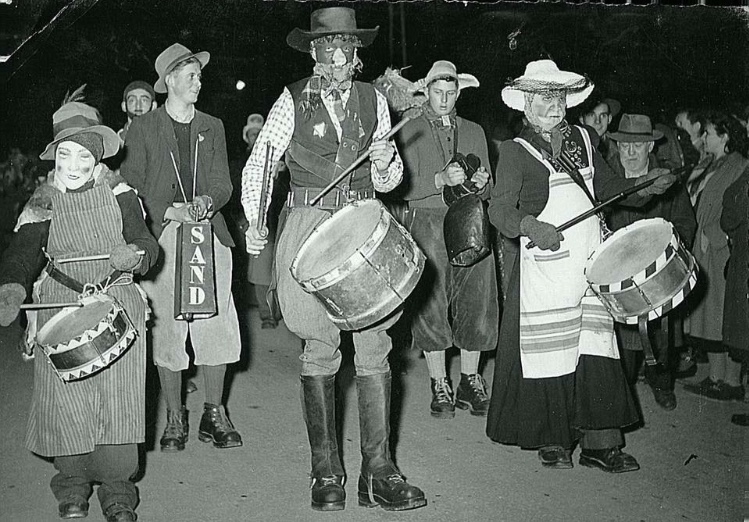
The Ubersitzler, which has been around since the turn of the 20th century, is filled with rumours, gossip and innuendo from the past 12 months. This is because the absolute anonymity of the authors allows them to write mercilessly about everyone and everything that occurs and attracts attention in the Haslital.
Some “aggrieved parties” have already threatened lawsuits, the anonymous committee told the Jungfrau-HaslerExternal link newspaper in 2004. However, no one has ever ended up in court. Yet.
Edited by Balz Rigendinger. Adapted from German by DeepL/ts
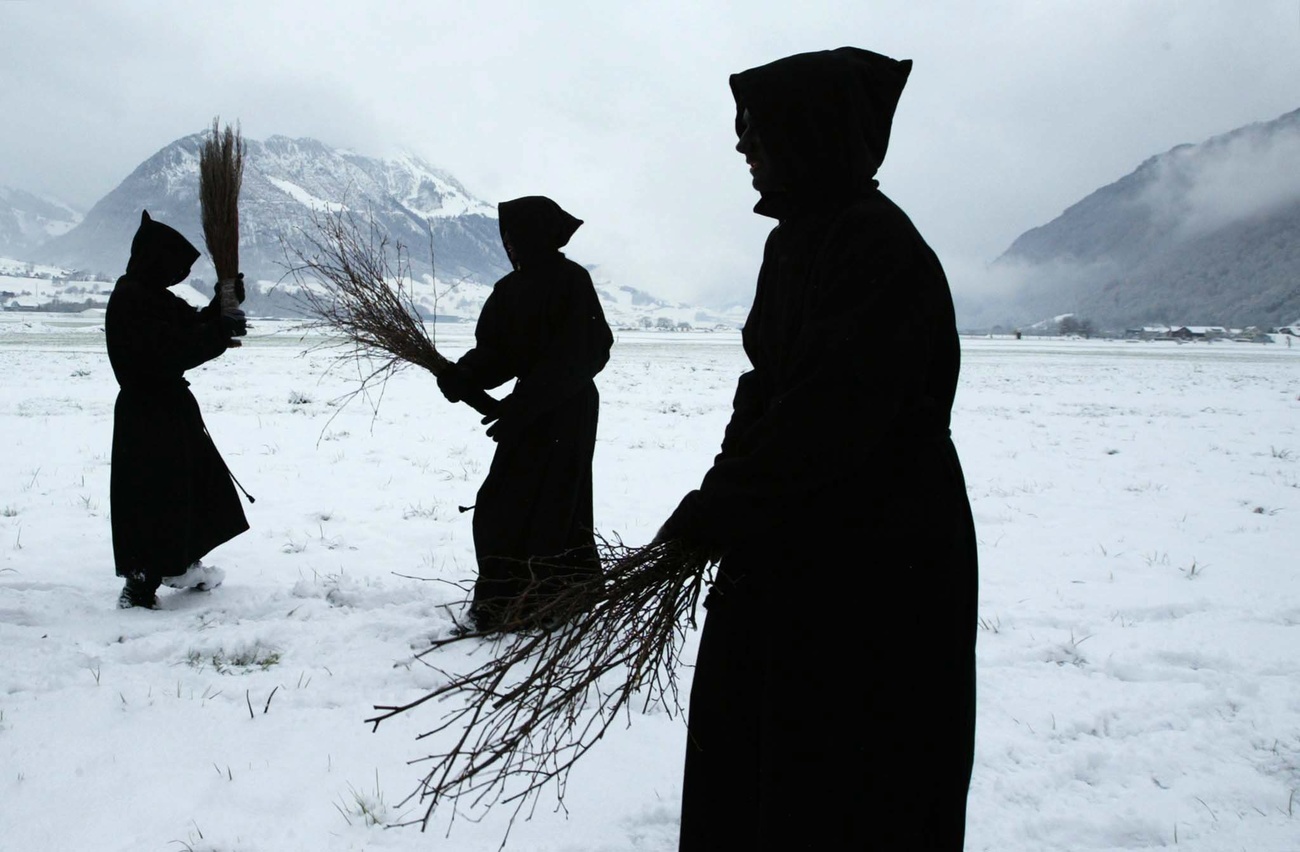
More
How Swiss festive bad boy Schmutzli cleaned up his act
More

In compliance with the JTI standards
More: SWI swissinfo.ch certified by the Journalism Trust Initiative










You can find an overview of ongoing debates with our journalists here . Please join us!
If you want to start a conversation about a topic raised in this article or want to report factual errors, email us at english@swissinfo.ch.